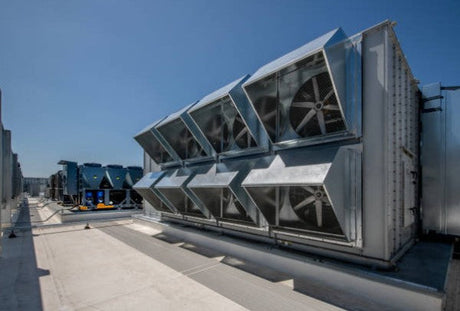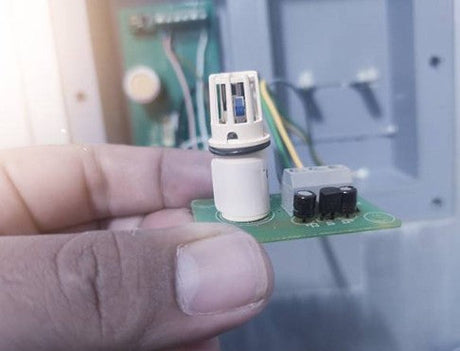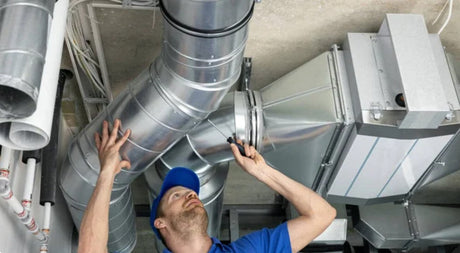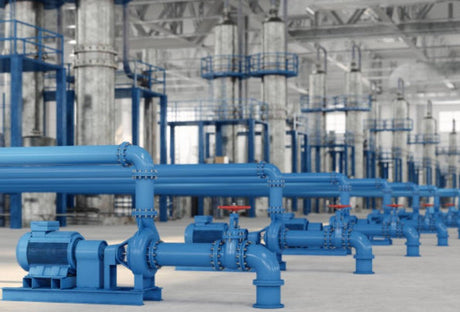In many industries, such as the chemical, oil and gas industry, but also numerous workshops Ex-protected lamps are of great importance for security and efficiency. In this article you will learn everything you need to know about the different designs, the requirements for ex-protected lamps and their typical areas of application. We also present specific solutions from our partner Zalux.
Ex-protected lamp: definition
What are ex-protected lights? According to the definition, ex-protected lamps are a specially developed lighting device that is used in explosive areas. It fulfills strict security standards to prevent the inflammation of explosive gases, vapors or dusts by sparks or surface temperatures. Ex-protected lamps are used in industries such as chemistry, petrochemistry or mining. In principle, wherever reliable security and standard -friendly certifications have a top priority.
Ex-protected lights and the designs
Ex protected lights come in different designs that are suitable for different purposes. We have summarized the most common designs and applications for you in the following:
-
Ceiling lights are ideal for large halls and workshops and ensure even illumination.
-
High -ranking luminaires were specially developed for warehouses and shelf systems and ensure precise light in high areas.
-
Street lights Increase the visibility in explosive outdoor areas and improve security here.
-
Work lights are characterized by their mobility and are used in dangerous zones with flexible requirements.
-
Mobile lights Convince with their versatility and are used in changing locations or in emergencies.
-
Escape path lights Mark escape routes reliably and, thanks to emergency power supply, remain functional even in critical situations.
-
Warning lights serve the clear signaling for dangers or critical operating states.

What are the requirements of ex-protected lamps?
The essential explosion protection requirements for ex-protected lamps include classification according to danger zones, the choice of the type of ignition protection, the control of the surface temperature and compliance with relevant certification.
The classification of lights takes place in accordance with the danger zones that define the risk of an explosion.
- Zone 0 describes areas in which explosive atmospheres are constantly present, while zone 1 and zone 2 are a sporadic or rare risk.
- Each zone requires specific protective measures, which are guaranteed by selecting the right types of infections such as "E" (increased security), "D" (explosion -protected housing) or "I" (secure enclosed systems).
| Zone | Description | Example of locations | risk |
| Zone 0 | Area in which an explosive atmosphere is permanently or over longer periods. | Within tanks, containers or pipelines with flammable gases. | Constantly or frequently present |
| Zone 1 | Area in which an explosive atmosphere during normal operation can occasionally occur. | Near tank openings, ventilation or process systems. | Occasionally present |
| Zone 2 | Area in which an explosive atmosphere does not normally occur and, if they do, only for a short time. | Environments of leakage or safety valves. | Rare and only for a short time |
Another critical factor is the surface temperature of the lamps. It must not lead to inflammation of flammable gases, steaming or dusting and must therefore be carefully checked.
Finally, certifications such as ATEX or IECEX create the necessary security and confirm compliance with international standards.

b) Luminaires-specific requirements
Ex-protected lights not only have to meet strict regulations, but also meet specific requirements in order to function effectively in dangerous environments.
brightness
The brightness of ex-protected lights in the application is a central criterion that, in addition to security, also influences the lighting conditions in a work area and thus also directly. Here are the terms Lumen (lm) and Lux (LX) to mention:
-
Lumen (lm): Lumen is the unit that describes the total amount of visible light, which is broadcast by a light source. A higher lumen number signals a lighter light source. For example, an ordinary 60-watt light bulb releases about 800 lumens.
- Lux (LX): Lux, on the other hand, is the unit that indicates how much light falls on a certain area. A lux corresponds to a lumen per square meter. In an office, a lighting strength of around 500 lux is recommended, while in industrial applications 300 to 1000 lux are often sought, depending on the specific requirements.
Color temperature
The color temperature influences how people perceive colors in their surroundings and their concentration and well -being. It is measured in Kelvin (K):
-
Warm white (2700k-3000K): For relaxed, less intensive lighting conditions, ideal for lounges.
-
Neutral white (4000k): Well suited for general work areas.
-
Daylight white (5000k-6500k): Perfect for environments where high concentration and accuracy are required, such as in laboratories or when assembling precise devices.
Construction and materials
Ex-protected lamps should always be made of robust, corrosion-resistant materials such as aluminum, stainless steel or special plastics. In the area in which ex-protected lights meet their purposes, the materials must withstand both mechanical stress as well as resistant to aggressive chemicals and high temperatures.
In addition, a well thought-out design and an intelligent design are important for ex-protected lights to prevent dust and moisture from penetrating. According to DIN EN 60529, the international standard for the protection against the ingress of water and solid foreign bodies, many ex protected lights must at least guarantee the level of protection IP65, which means that they are dust -tight and protected against jet water.
Energy efficiency
Modern ex-protected lamps in use scores with a high energy efficiency class (at least A), help to reduce operating costs and reduce the environmental impact. LED technology forms a contemporary solution here that creates both bright lighting conditions and has low energy consumption.
A typical LED ex lamp can bring a light output of 100 lm/w. An LED lamp with an output of 50 watts thus produces approximately 5000 lumens. Compared to conventional HMI or halogen lamps, this means considerable energy saving, since it often only has 60 and 80 lm/w.
Installation & maintenance
Maintenance-friendly designs of ex-protected lamps, simple access to the lamp change and electrical connections are essential for the purpose of ex-protected lights. A good example of this is modular designs in which the ex-protected lamp can be broken down into units. The technician has the option to carry out maintenance and repair work with minimal effort.
Special functions
Additional functions such as emergency power supply, post-luminance function and the integration of DALI protocols (digital addressable lighting interface) to intelligent control of the lighting increase the safety essentially and optimize the operation of the ex-protected lamps in critical applications.
Example of special functions:
-
Emergency power supply: In a petrochemical system, it is of the utmost importance that the emergency lighting is automatically activated in the event of a power failure to ensure safe evacuation.
-
Dali protocol: Multifaceted control options enable flexible adaptation of the lighting conditions depending on the work tasks or times of the day.
Application cases and solutions for ex-protected lights from Zalux
While our development and production focus is on Seikom Electronic in the area of industrial measuring and control technology, we work closely with our partner Zalux from Spain for explosive lights. Zalux is part of the German Trilux Group, has more than 40 years of experience and, with almost 400 employees, manufactures more than 3.5 million lights per year. The following overview shows simplified the available model series in the area of explosion -protected lights.

We would like to go down in the following on 2 series: the ACQUEX ceiling and wall lamp and the high-ranger orex.
Acquaint
The Acquex series brings a range of waterproof and robust of the ex-protected lights, which are specially designed for environments with high humidity. The ex-protected lamps in use are not only energy-efficient, but also equipped with various special functions that significantly increase user-friendliness. They are ideal for use in petrochemical systems and other moist environments.

Orex
The Orex series, on the other hand, is known for its versatile applicability. The ex-protected lights are ideal for demanding environments in which both light intensity and security play a role. They score with high energy efficiency and are available in different versions in order to meet the specific requirements of each industry.

Summary and conclusion to ex-protected lights and their meaning
Ex-protected lights are of great importance in many industrial applications in which security requirements have a top priority. At Seikom Electronic, we have a wide range of ex-lamps that correspond to all relevant standards and are characterized by quality and durability.
For more information or questions about our products, we will be happy to help you personally and competently.






